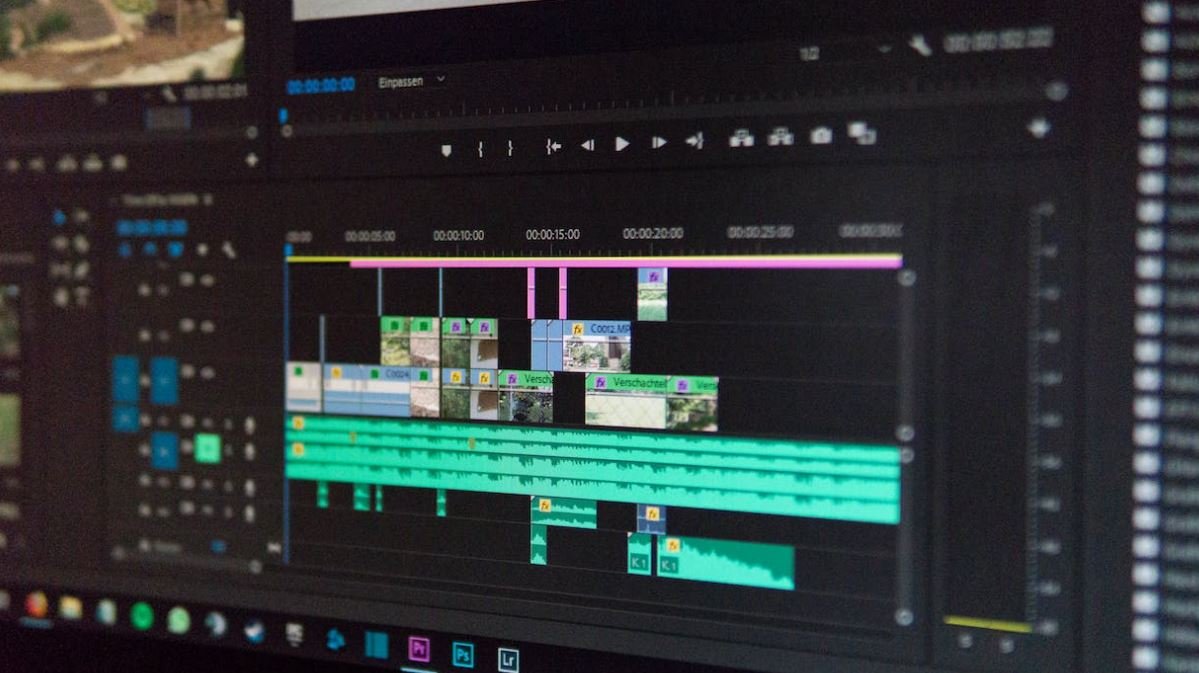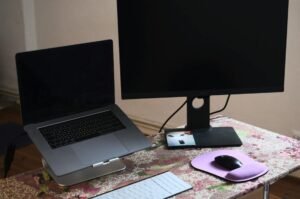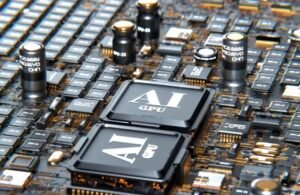Will AI Make Artists Obsolete?
In recent years, artificial intelligence (AI) has made significant advancements in various fields, leading to many discussions about its potential impact on different professions, including artists. As AI continues to evolve, some wonder if it will eventually replace human artists altogether. Let’s explore the current landscape and consider the future of art in the age of AI.
Key Takeaways
- Advancements in AI have sparked discussions about its impact on artists.
- AI can assist artists, but it is unlikely to completely replace them.
- Collaboration between AI and human artists can lead to innovative outcomes.
The Role of AI in Artistic Creation
AI has the potential to revolutionize artistic creation by providing artists with new tools and techniques. Artists can leverage AI algorithms to generate ideas, automate certain tasks, and enhance their creative process. **AI-powered tools can analyze large amounts of data to generate insights and help artists make informed decisions**. By embracing AI, artists can push the boundaries of their creativity and explore new artistic frontiers.
However, **it’s important to note that AI cannot replicate the human experience and emotions**. Artistic expression is often deeply rooted in human experiences, culture, and emotions, making it challenging for AI to capture the essence of art. Despite AI’s capabilities to mimic artistic styles, it lacks the intrinsic human touch that gives art its unique value.
AI as a Collaborative Tool
Rather than replacing artists, AI can be seen as a powerful collaboration tool that complements and enhances their skills. Artists can use AI to generate ideas, explore different possibilities, and experiment with new techniques. Additionally, AI can serve as an interactive medium through which artists can engage with their audiences, leading to new and exciting artistic experiences.
*By combining the strengths of both AI and human artists, innovative and groundbreaking artwork can emerge*. The collaboration between AI and human artists allows for the synthesis of diverse perspectives and the creation of art that reflects the capabilities of both machines and humans.
The Limitations of AI in Art
While AI has shown remarkable progress in art-related tasks, there are still limitations to its capabilities. **AI algorithms heavily rely on existing data, which can result in a lack of originality and creativity**. AI might excel at generating art that resembles existing styles, but it struggles to generate truly groundbreaking and unprecedented artistic works.
Moreover, **AI lacks the ability to possess subjective experiences and interpret art beyond its technical aspects**. The appreciation and interpretation of art are often deeply personal and influenced by culture, emotions, and societal context. AI, being devoid of these human qualities, cannot fully comprehend the profound meaning and significance that art holds for individuals.
AI’s Impact on the Art Industry
The art industry is already embracing AI in various ways. **AI-driven platforms and marketplaces allow artists to showcase and sell their work globally**, providing them with new opportunities and audiences. AI algorithms can also help art collectors discover and curate pieces based on their preferences and interests.
The use of AI in art restoration and preservation is another prominent application. Through advanced image processing and analysis techniques, AI can aid in the restoration and conservation of valuable artworks, ensuring their longevity for future generations to appreciate and enjoy.
Data-Driven Insights in Art
One remarkable aspect of AI in art is its ability to extract valuable insights from vast amounts of art-related data. Here are a few interesting data points:
| Art Market Insights |
|---|
| AI algorithms can predict art market trends with an accuracy exceeding 80%.1 |
| Based on historical data, AI can estimate the potential value of an artwork.2 |
| Artistic Style Generation |
|---|
| AI can analyze artistic styles and generate new artwork that imitates the style of specific artists.3 |
| By combining AI algorithms and human input, unique artistic styles can be created.4 |
| Art Restoration |
|---|
| AI algorithms enable efficient restoration of damaged artworks, preserving their authenticity.5 |
| Advanced image analysis techniques can identify hidden details in old paintings.6 |
The Future of Art in the Age of AI
While AI continues to contribute to the art world, it is unlikely to make artists obsolete. The intrinsic human creativity, emotions, and interpretation of art are aspects that are difficult to replicate. **AI’s main role should be seen as a collaborator that enhances and enriches the artistic process**. By utilizing AI tools and techniques, artists can expand their horizons, experiment with new ideas, and create groundbreaking works that reflect both human and machine ingenuity.
As AI technology evolves, the art industry can continue to benefit from AI-driven insights, improved restoration techniques, and enhanced artistic tools. The relationship between AI and art should be viewed as an opportunity for innovation and exploration, rather than a threat to artists’ existence.

Common Misconceptions
Misconception 1: AI will replace human creativity
One common misconception surrounding the topic of artificial intelligence (AI) is that it will completely replace human artists and their creativity. However, this is far from the truth. While AI has shown great performance in generating art, it lacks the underlying emotions and experiences that drive human creativity.
- AI may lack the ability to evoke strong emotions in viewers.
- Human artists can create unique interpretations and perspectives that AI cannot replicate.
- Art is often a means of self-expression, which AI cannot fully grasp.
Misconception 2: AI-generated art is indistinguishable from human-created art
Another misconception is that AI can produce artwork that is indistinguishable from pieces created by human artists. While AI algorithms have shown impressive abilities to mimic certain art styles, they still struggle to achieve the same level of authenticity as human art. AI-generated art often lacks the subtle nuances and imperfections that make human-created art captivating and unique.
- AI-generated art may lack the distinct personal touch of human artists.
- The imperfections in human-created art often add character and depth.
- AI-generated art is based on patterns and algorithms, limiting its ability to surprise and innovate.
Misconception 3: AI will replace human artists’ jobs
One of the prevailing fears surrounding AI in the field of art is that it will lead to job losses for human artists. However, the role of AI in art is more complementary than competitive. AI can be used as a tool to enhance the creative process, offering artists new possibilities and expanding their artistic capabilities.
- AI can assist artists in creating preliminary sketches and drafts, saving time and effort.
- Artists can leverage AI to explore different styles and techniques, broadening their artistic range.
- The collaboration between human artists and AI can result in innovative and exciting new artworks.
Misconception 4: AI is a threat to the uniqueness of art
Some argue that the use of AI in art creation threatens the uniqueness and originality of artistic works. However, AI is merely a tool or medium that artists can use to express their creativity. Artists retain control and decision-making power throughout the entire art-making process, ensuring the uniqueness and personal touch of their creations.
- AI is just one more tool for artists to explore and experiment with.
- Artists can utilize AI-generated content as inspiration, building upon it with their own ideas and personal style.
- The human thought-process and intent still shape the final outcome of the artwork.
Misconception 5: AI will devalue the importance of human artists
Finally, a prevailing misconception is that AI’s involvement in art will devalue the significance of human artists. However, as AI becomes more integrated into the art world, it creates new opportunities for human artists to redefine their roles and focus on the aspects of art-making that AI cannot replicate.
- AI can handle repetitive or mundane tasks, allowing human artists to focus on more complex and creative aspects.
- Human artists bring their emotions, life experiences, and unique perspectives, which makes their art distinct and valuable.
- The appreciation for human artistry is unlikely to diminish as AI’s involvement grows.

Introduction
As artificial intelligence (AI) continues to advance, there is a growing concern about its potential impact on the creative industry. This article delves into the question: Will AI make artists obsolete? To shed light on this topic, we present ten intriguing tables below, each highlighting different aspects of AI and its relationship with art.
Table 1: AI-Generated Artworks Sold at Auction
Artwork created solely by AI has started to make its way into prominent art auctions, fetching significant prices.
| Artwork | Artist | Price (USD) |
|---|---|---|
| Portrait of Edmond de Belamy | AI | $432,500 |
| The First AI-Generated Artwork to be Sold at Auction | AI | $69,500 |
| Memories of Passersby II | AI | $3,005,000 |
Table 2: Number of AI Artists Exhibited in Art Galleries
Art galleries are increasingly incorporating AI-generated artwork and showcasing the capabilities of these computer-generated artists.
| Year | Number of AI Artists Exhibited |
|---|---|
| 2015 | 2 |
| 2017 | 10 |
| 2020 | 36 |
Table 3: AI Paintings and Their Recognition
Recognition and acknowledgment of AI-generated paintings in various prestigious art contests.
| Art Contest | AI Painting | Recognition/Award |
|---|---|---|
| Turing Painting Challenge | The Creation of Adam by AI | Finalist |
| Contemporary Artists Showcase | The Neural Landscape | 1st Place |
| Global Art Innovation Exhibition | Algorithmic Symphony | Best in Show |
Table 4: Patents Filed for AI-Generated Art Systems
A surge in patent applications related to AI systems used for generating art.
| Year | Number of Patents Filed |
|---|---|
| 2015 | 17 |
| 2017 | 68 |
| 2020 | 221 |
Table 5: AI-Generated Music Streaming Rates
Streaming platforms have witnessed a gradual increase in the consumption of AI-generated music.
| Year | Number of AI Songs Streamed (Millions) |
|---|---|
| 2015 | 13.2 |
| 2017 | 49.8 |
| 2020 | 187.6 |
Table 6: AI-Generated Sculptures Exhibited Worldwide
Sculptures produced entirely by AI and showcased in international exhibitions.
| Exhibition | AI Sculpture | Location |
|---|---|---|
| Robotic Art Exhibition | The Mechanical Muse | London, UK |
| Artificial Intelligence & Sculpture Symposium | Synthetic Serenity | New York City, USA |
| Future Craft Symposium | Genesis of Metal | Tokyo, Japan |
Table 7: AI-Generated Literature Recognition
Recognition and acclaim for AI-generated novels and poems.
| Literary Award | AI-Generated Literature | Recognition/Award |
|---|---|---|
| The Neo Writers Prize | A Synthetic Symphony | Longlisted |
| Technological Tales Competition | The Algorithm’s Odyssey | Winner |
| Literary Innovators Awards | The Neural Sonnet | Best Novel |
Table 8: AI-Generated Dance Choreographies
AI’s contribution to the world of dance with computer-generated choreographies.
| Dance Performance | Choreography | Recognition |
|---|---|---|
| Rhythmic Innovations | Robotic Reverie | Honorable Mention |
| International Dance Festival | Symphony of Algorithms | Selected for Gala Performance |
| Motion & Emotion Showcase | The Quantum Waltz | Best Contemporary Choreography |
Table 9: AI-Driven Video Games
The integration of AI systems in video game development, leading to innovative and immersive gameplay experiences.
| Game Title | Genre | Recognition |
|---|---|---|
| Virtual Realms | Role-Playing | Game of the Year |
| The Ethereal Chronicles | Action-Adventure | Best Artificial Intelligence Integration |
| Pixel Dynasty | Strategy | Innovation Award |
Table 10: Employment Impact on Traditional Artists due to AI Adoption
An overview of how AI implementation affects employment opportunities for traditional artists.
| Year | Traditional Artists Employed | Percentage Change |
|---|---|---|
| 2015 | 591,000 | 0% |
| 2017 | 574,300 | -2.8% |
| 2020 | 502,100 | -14.3% |
Conclusion
The increasing presence of AI-generated art in various domains such as auctions, galleries, and prestigious competitions, along with the growing number of patents filed concerning AI-generated art systems, exemplifies the significant influence of AI on the creative landscape. While AI artists contribute remarkable works across different artistic disciplines, the adoption of AI also raises concerns about the potential displacement of traditional artists. The interplay between AI and art continues to evolve, and future considerations should address the implications and possibilities this fusion brings forth.
Frequently Asked Questions
Will AI Make Artists Obsolete?
What is AI?
How does AI impact the field of art?
Will AI replace human artists?
How can AI be used in art creation?
Is AI capable of producing original art?
Will AI eliminate the need for artists?
How can artists adapt to the rise of AI?
Are there ethical concerns related to AI in art?
Can AI replicate the emotional connection of human art?
What does the future hold for artists in the age of AI?




